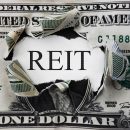7 Factors You Must Remember to Ensure Investment Success

A good investment can be defined as one that provides profits in the long run. However, with the various investment options offered in the market, it is essential to be extremely vigilant and careful while selecting an instrument. Investors must specifically be cautious of new and excessively attractive investment propositions. It is also necessary for them to be informed about the market and investment mechanisms. Several other factors must be kept in mind to ensure profitable outcomes. Here are seven such considerations:
Table of Contents
1. Investment strategy
The primary stepping-stone in achieving investment success is the formulation of a financial strategy. It is vital for people to understand their investment position, establish their objectives, and ultimately lay-out a realistic approach towards accomplishing those objectives. This is the chief purpose of investment planning and can be attained by the application of some balanced principles. It is not only necessary to formulate a plan, but equally important to stick to it till your financial goals are reached within a stipulated period.
Though the market might display volatilities, investors must stay on track with their pre-designed financial strategy. When an investment plan is tactically formulated, it already takes into account the probable ups and downs of the market. Thus, it is the responsibility of the investor to remain determined during good and bad times.
2. Asset diversification
Another critical aspect of investment success is asset diversification. This implies that the entire investment must not be blocked in a single asset or stock. It is more beneficial to invest the funds across various stocks, bonds, mutual funds, and other asset groups. Investors also have an opportunity to diversify within each investment class. Additionally, individuals can consider devoting funds across various sectors, regions, etc.
Diversification is imperative for managing the risk associated with an investment. While some assets are considered high-risk, some entail a lower level of risk. Diversification ensures a balanced portfolio with the potential to grow. It is instrumental in offering a considerable degree of stability between risk and returns. However, it does not provide any guarantee that the investor will only make profits and incur no losses.
Diversification within stocks can be based on two factors. The first is the investment style where investors can pick stocks based on their value, blend, and growth prospects. The other way to diversify investments is via size. Here, individuals can choose from small-cap, mid-cap, and large-cap funds. Credit qualities, maturities, and issuers can also be used as the basis of diversification in bonds. Always remember that a strong and robust asset composition entails better preparation for retirement.
3. Funds with lower expense ratios
Cutting down on expenditures is one more crucial factor that can lead to success. It is hard for an investor or a broker to contain volatility or movement of the market, but it is possible to keep expenses under check. According to historical data, it has been seen that funds which entail lower expense ratios display an increased probability of performing better than the funds within the same group. Their performance is calculated based on the relative total return and the ratings of future risk-adjusted returns.
Investors can also control costs by appointing their broker with caution. It has been established that not only the execution, but the trading commissions charged by brokers may also differ based on several factors. Different brokers charge different fees. The broker must be selected carefully to avoid paying unnecessary hidden charges.
4. Returns after tax deductions
Proper knowledge associated with account types and taxes can also determine a person’s returns. Investors are suggested to adopt the account location approach. This involves the allocation of funds across various accounts based on the tax liability associated with those accounts. In addition to this, investors must use an extended concept of asset location. Under this, the allocation of various classes of investment to different types of accounts must be done on the basis of the investments’ tax efficiency and the tax regulations of each account type. Investments with the least tax efficiency should be allocated to accounts offering tax benefits, such as a 401(k) account or an individual retirement account (IRA). Investments with high tax efficiency should find their way to taxable accounts.
5. Long-term compounding
Investors might want to consider the concept of long-term compounding to enhance their chances of a successful investment portfolio. Compounding refers to the returns offered by earnings that were re-invested in the same investment instrument. This implies that returns only multiply when the funds are left invested for an extended period in the same asset, and the earnings from those funds are reinvested.
Furthermore, in the case of IRAs and other tax-deferred accounts like the qualified retirement scheme, the investor does not have to pay any taxes. This way, higher amounts get reinvested. The compounding concept, therefore, works best for retirement accounts with tax benefits.
6. Timeline for each investment maturity
To achieve investment success, it is necessary to let the funds remain invested in the asset till the end of the maturity period. Withdrawal of investments before maturity can lead to a loss in the principal amount as well as the interest. Thus, it is obligatory to understand the maturity time associated with each instrument before investing in it.
The investment portfolio must be formulated in a manner that it comprises assets that mature at a time when the investor is likely to require funds. If the investor needs funds in the near future, it is advisable to invest in tools that exhibit higher stability than others. If the investor can afford to leave investments over a longer period, then funds can be allocated to more volatile assets that are likely to give better returns in the long run.
7. Review and re-allocate
While it is advisable to leave investments over a longer time period for best returns, it is equally necessary to re-evaluate your asset portfolio periodically. In case there are modifications in the economic environment that are likely to have an adverse impact on a specific asset group or instrument, crucial changes and re-allocation of investments must be considered.
A regular review will also give investors a better understanding of whether their assets are offering them the expected returns. Subsequently, these returns automatically modify the investors’ investment allocation.
To sum it up
The calculation of various ratios and information regarding different types of accounts requires comprehensive knowledge. Understanding market volatility and stability of various assets and investment instruments is also imperative. All factors mentioned above are important for investment success and must be carefully examined and analyzed. Investors must deliberately adopt a portfolio that is likely to meet their requirements at the right time, offering them maximum returns.
The first and foremost step towards a successful investment strategy is financial planning, which may require professional advice and guidance. Reaching out to financial advisors can help you make crucial decisions required for successful investment returns.
















